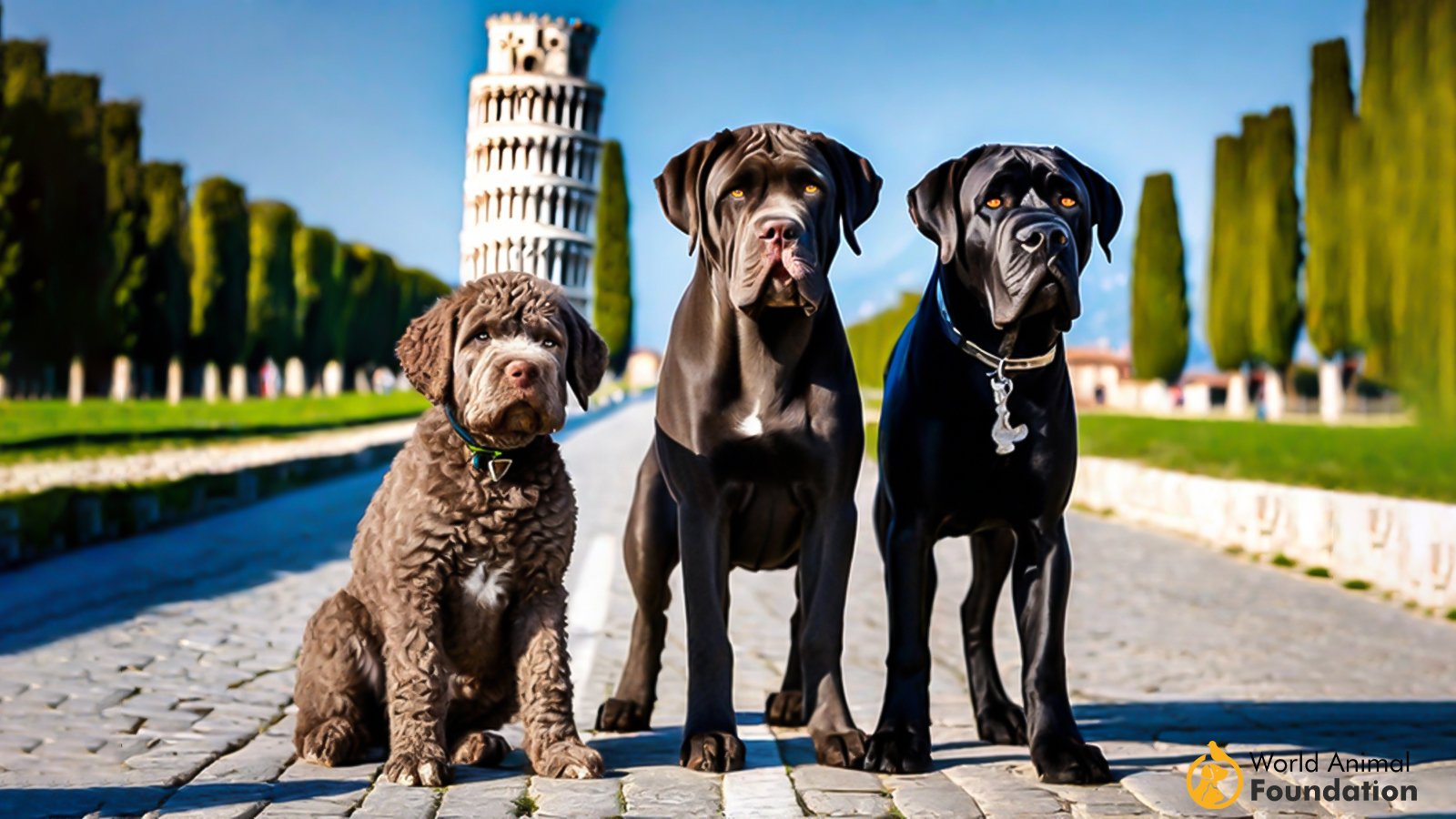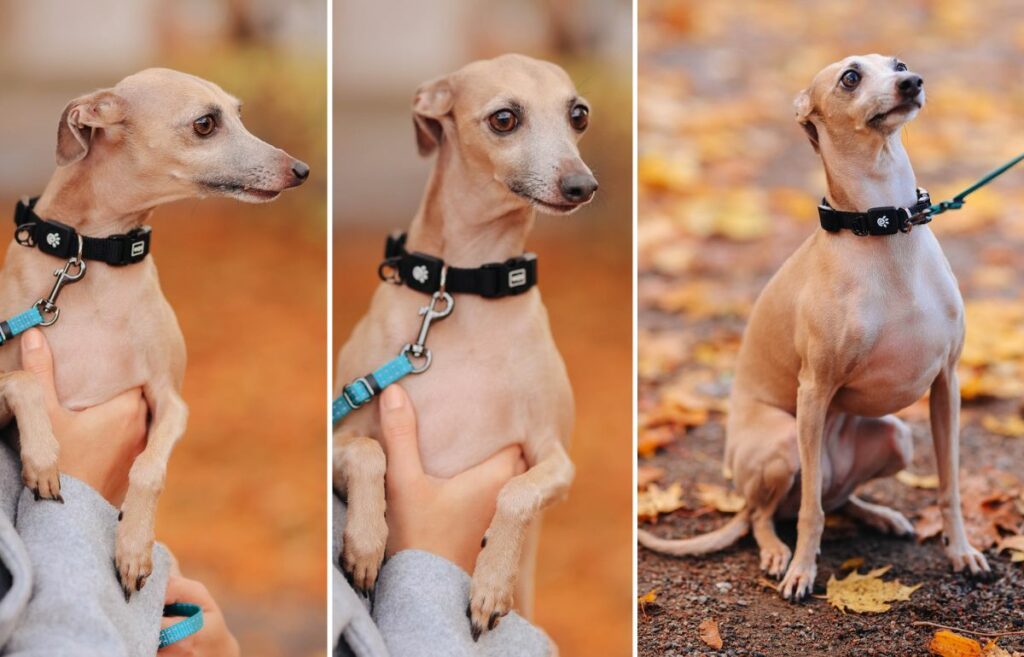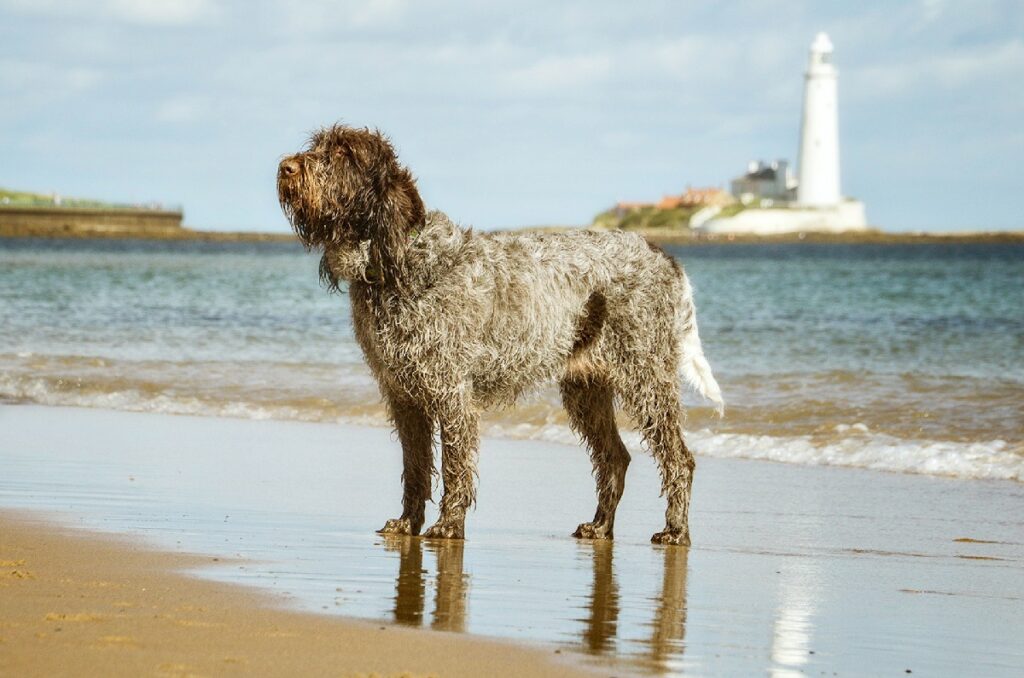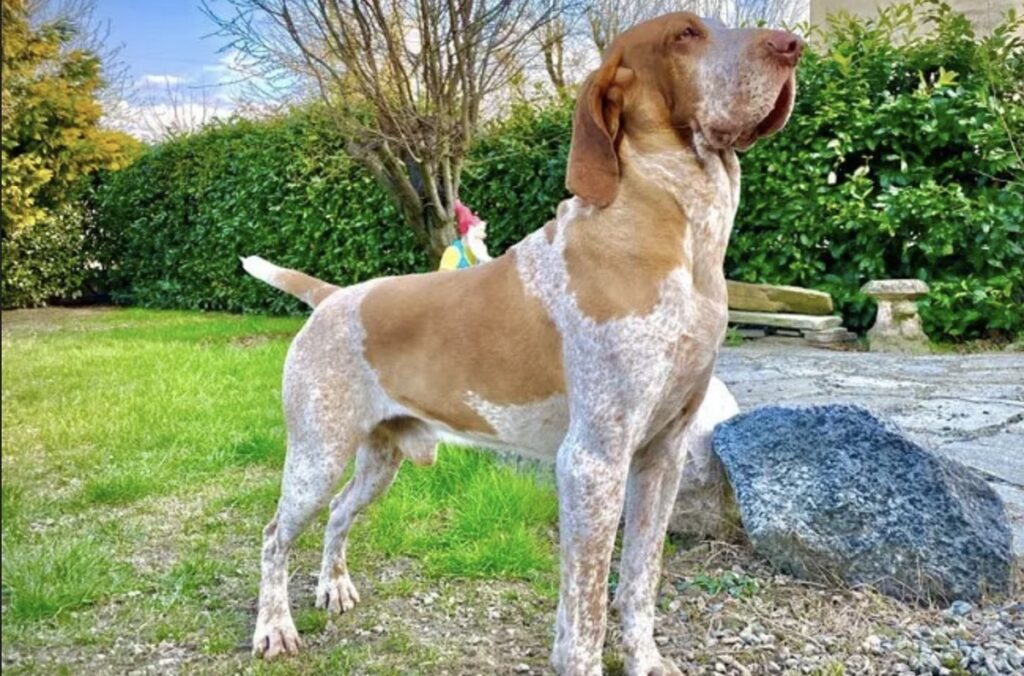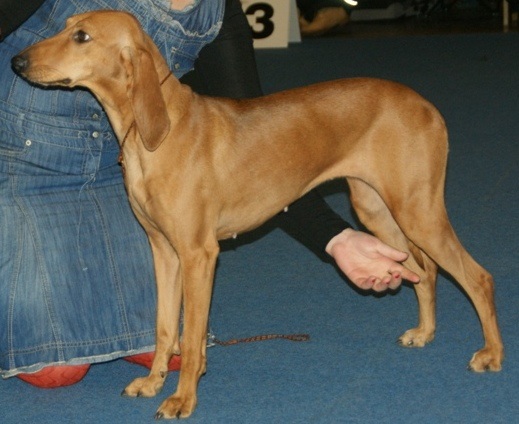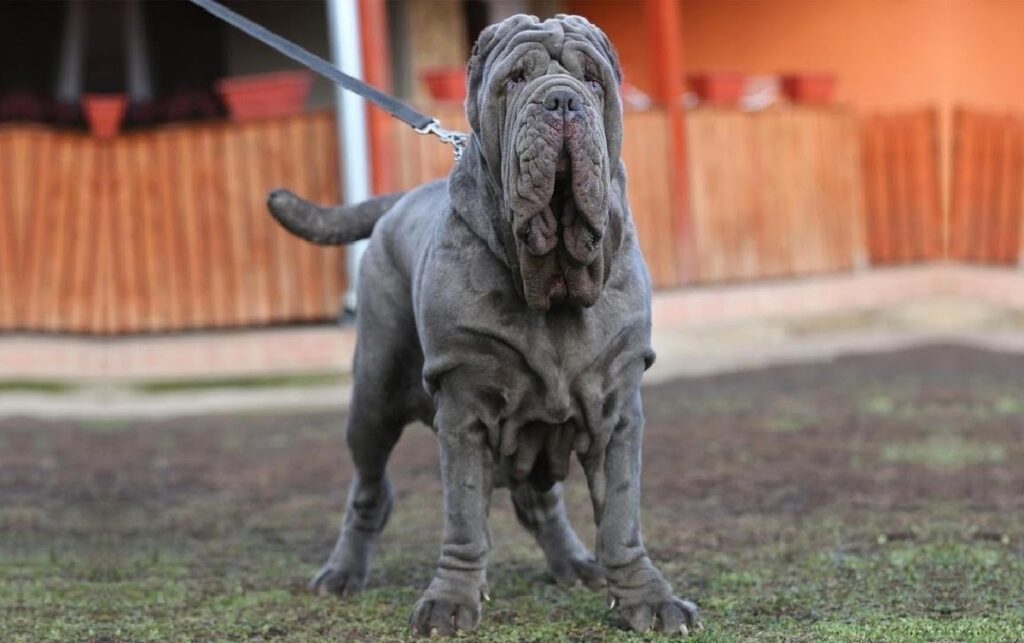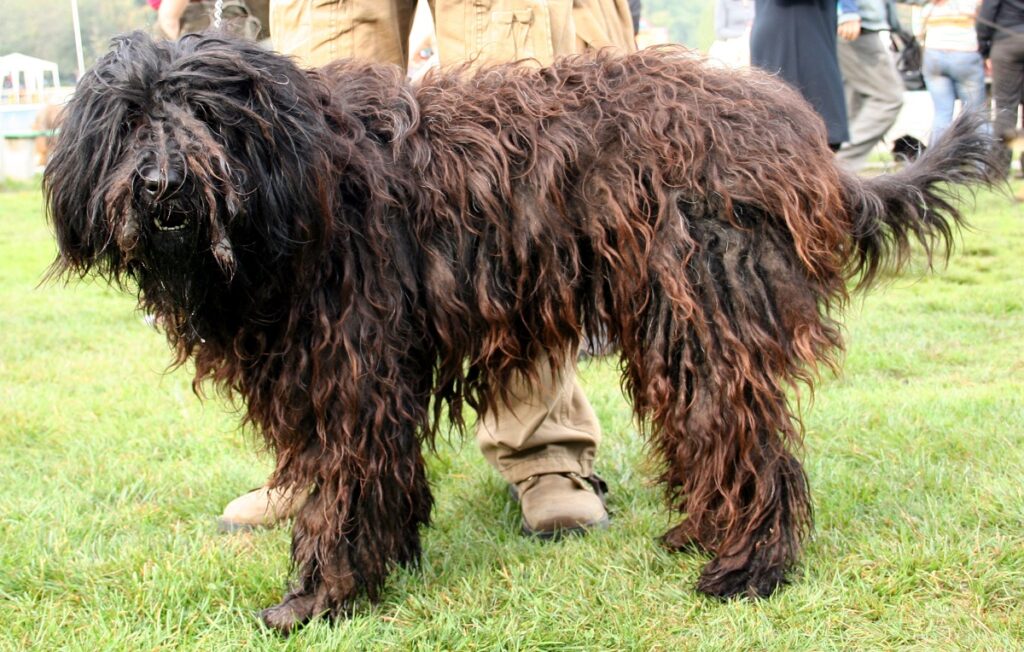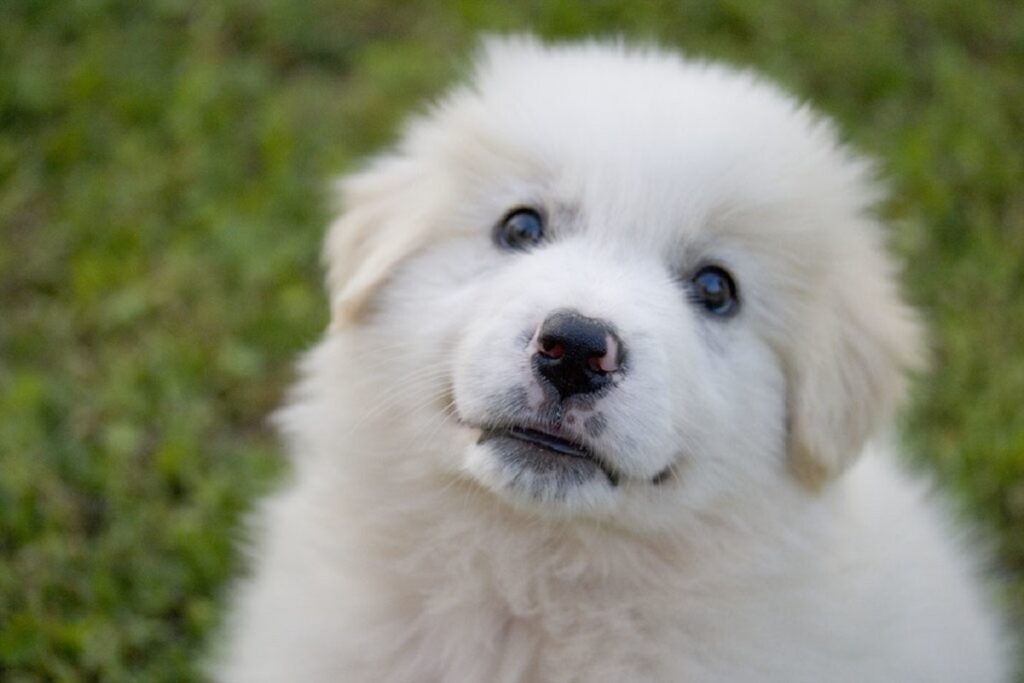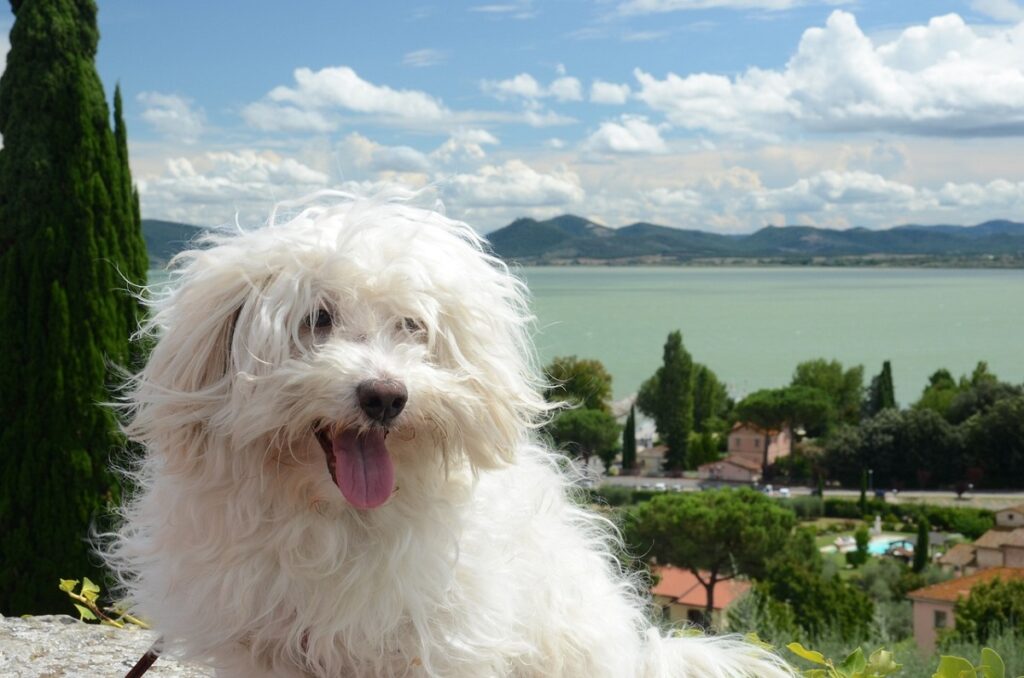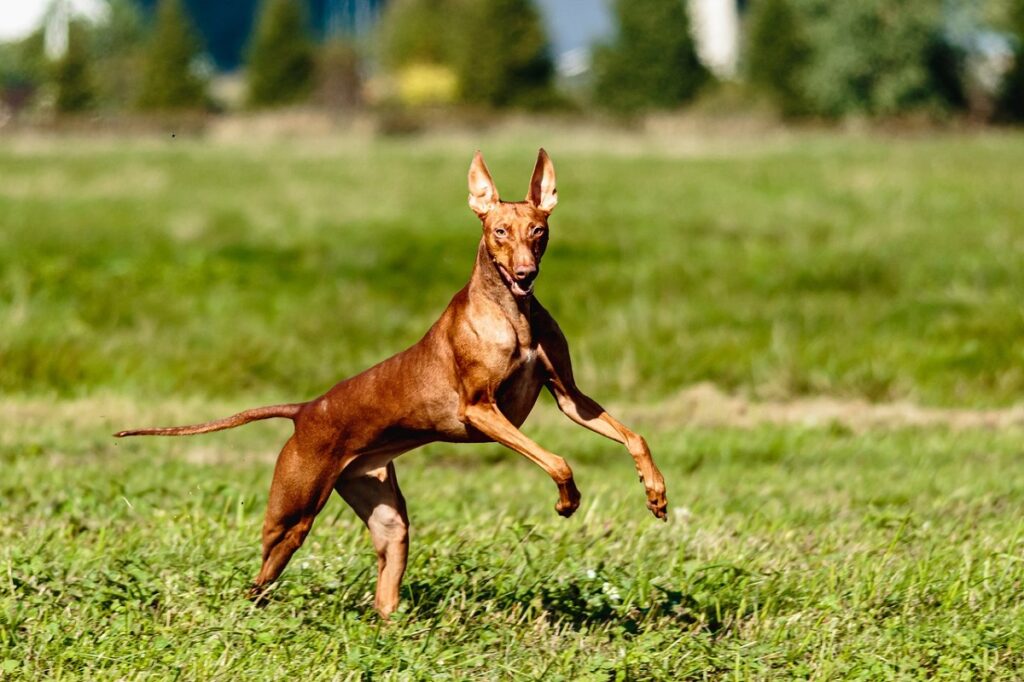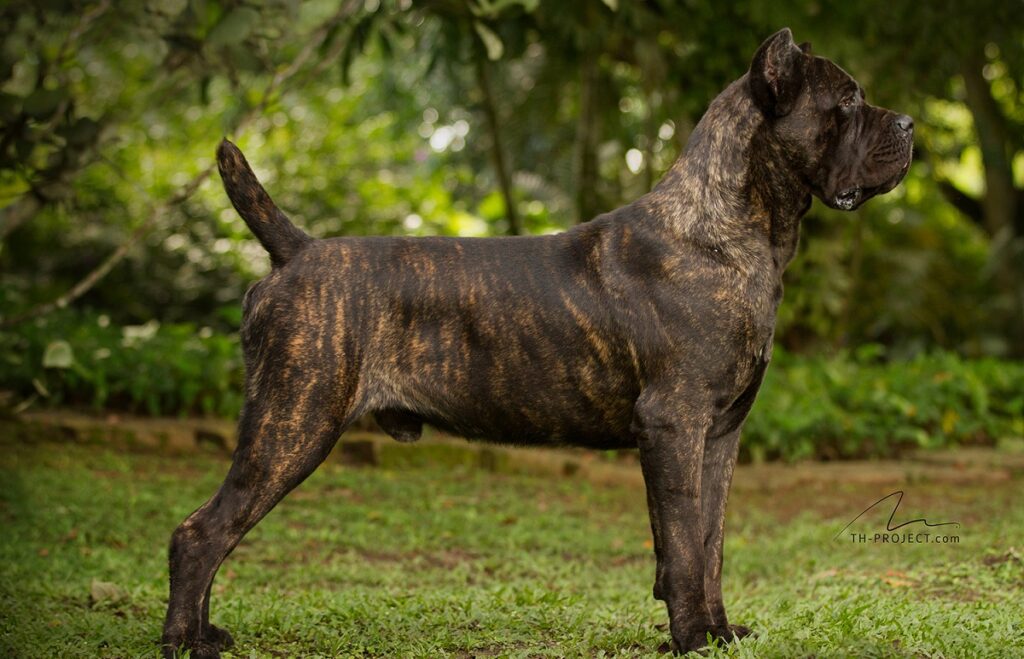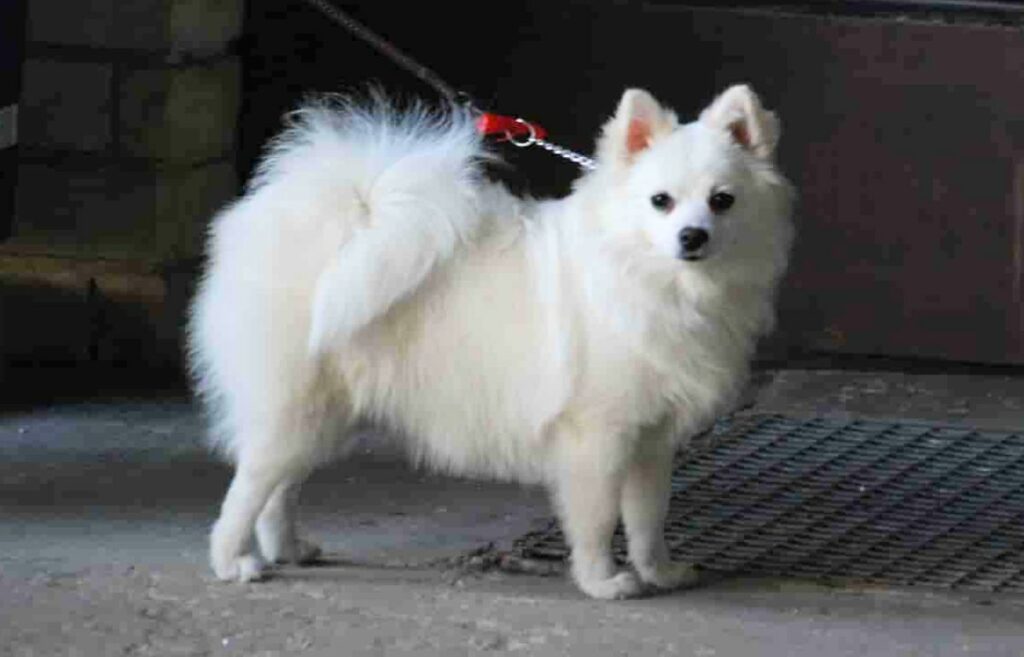Italy, renowned for its art, cuisine, and fashion, also boasts a rich canine heritage. From ancient Roman war dogs to modern-day companions, Italian breeds captivate with their diverse beauty and unique personalities. Prepare to be charmed by thirteen stunning Italian dog breeds, each with a captivating history and undeniable allure. Whether you’re seeking a loyal guardian, an energetic playmate, or a cuddly companion, you’re sure to find an Italian breed that steals your heart.
Adorable canines come from every corner of the earth. Many bred in Europe were created to protect livestock, hunt, guard, haul heavy things, and — best of all — to sit in human laps!
When Italy isn’t busy perfecting pasta or serenading us with opera, it’s gifting the world with dog breeds that are pure ‘Bella Vita.’ From the rolling hills of Tuscany to the bustling streets of Rome, Italy has mastered the art of wining, dining, and… designing dogs you can’t resist!
Some of these Italian breeds have made their way to the US, but others we haven’t even seen!
Any of these canines from Italy would make a delightful fur friend! They range in size, appearance, personality, energy levels, physical characteristics, and more.
Let’s meet the Italian dog breeds!
Italian Dog Breed
From the heart of Italy comes a parade of canine elegance, each breed echoing the country’s rich heritage and undeniable charm.
1. Italian Greyhound
| GROUP | Toy |
| WEIGHT | 7-14 pounds |
| HEIGHT | 13-15 inches tall |
| FUR AND COLORS | Short hair coat infawn, blue, red, red fawn, black, blue, fawn sable, seal, white and black, white and blue, white and fawn, white and red, white and red fawn, white and blue fawn, white and seal, white and sable, black and tan, white brindle, blue and tan, chocolate, cream |
| LIFE SPAN | 14-15 years |
Italian Greyhounds look like they were created by an Italian designer in Milan. The American Kennel Club (AKC) calls the Italian Greyhound “as elegant and graceful as a greyhound, but smaller.”
The AKC also describes this Italian dog breed as a “courser at heart, originally used to hunt.” This Italian dog breed enjoys chasing prey but is also happy on the couch or in bed with their people.
The Italian greyhound is affectionate, good with children and other dogs, friendly, playful, trainable, alert, and sensitive. They love their family, are well suited to apartment living, and benefit from training like all dogs. They are very fast for their small size, and they need exercise.
The Italian greyhound was bred to be noble companions 2,000 years ago in what’s now modern Greece and Turkey. The Romans were there then. In Renaissance Italy, they were a status symbol.
Famous owners of the Italian greyhound hunting breed include Catherine the Great, Frederick the Great, Queen Victoria, and more. The slender Italian greyhound is one of the smallest Italian dog breeds.
2. Spinone Italiano
| GROUP | Sporting |
| WEIGHT | 75–86 pounds |
| HEIGHT | 22-27 inches tall |
| FUR AND COLORS | Shaggy hair in white, orange roan, white and orange, brown roan |
| LIFE SPAN | 10-12 years |
While Spinone sounds like the name of a delicious dessert to me, it means “strongly-built gun dog with a wiry white coat and pendulous ears.” Spumoni is actually ice cream.
Italian dog breed Spinone Italiano dogs are patient, sociable, docile, affectionate, good with other dogs, and intelligent. They have a stubborn streak but are easily trained. This muscular pup was originally bred as a hunting dog and worked in the fields.
They are hard workers and have a great deal of endurance, making them excellent hunting partners. As pets, they need exercise because they aren’t hunting or doing field work.
The Spinone Italiano is an ancient dog breed. Documents dating back to the Italian Renaissance refer to pointing dogs with bristled hair hunting dogs. They are versatile and were bred from the Griffon.
They are experts at pointing, retrieving, tracking, and bringing down prey on land or in fast-running or marshy water. This breed, like all of them, needs training.
3. Bracco Italiano
| GROUP | Sporting |
| WEIGHT | 55-90 pounds |
| HEIGHT | 21-27 inches tall |
| FUR AND COLORS | Short dense coat inwhite, white and orange, white and chestnut |
| LIFE SPAN | 10-14 years |
Bracco Italiano canines are good with other dogs, affectionate, intelligent, enthusiastic, muscular, and easy to train. The AKC calls the Bracco Italiano “gentle in the home and tireless in the field.” The Bracco is one of the oldest pointing breeds in Europe.
The Bracco, a gun dog, arrived in the US in the 1990s. Their role as hunting dog is to retrieve prey, so they need a lot of exercise if they aren’t working. They are also loyal and wonderful family dogs. Braccos from Piedmont are orange and white, and larger ones from Lombardy are white.
The Bracco Italiano is an Italian pointer. They are believed to be bred from the Segugio Italiano and the Asiatic Mastiff. Researchers say that they date back to the fourth or fifth century BC and are the oldest European pointer.
They have a large head and long, floppy ears. They nearly went extinct in the 18th century but were bred back. Sometimes, when they are running, their droopy ears fill with wind-like sails and stay upright.
4. Segugio Italiano
| GROUP | Hound |
| WEIGHT | 39-62 pounds |
| HEIGHT | 19-24.5 inches tall |
| FUR AND COLORS | Comes in short or wire hair in tawny, black and tan, grizzle, tan and black |
| LIFE SPAN | 11-13 years |
The Segugio Italiano is intelligent, eager to please, friendly, protective, good with kids and dogs, and very trainable. The Segugio is courageous, cautious, a tenacious hunter, loyal, gentle, and has an abundance of stamina. They need mental and physical exercise. Training will ensure that this breed is well-behaved.
They are an ancient breed believed to have descended from Egyptian hounds that wound up in Italy. Segugios are scent hounds used to hunt wild boar — which is surprising because they are medium-sized.
In the present, they continue to hunt rabbits and small animals. They are able to track and also kill (lovely). Segugios can work in any condition for hours. They have really long ears and were just recognized by the AKC in 2022.
5. Lagotto Romagnolo
| GROUP | Sporting |
| WEIGHT | 24-35 pounds |
| HEIGHT | 16-19 inches tall |
| FUR AND COLORS | Double, wooly curly coat in off-white, brown roan, brown, orange, white, sable, orange roan |
| LIFE SPAN | 15-17 year |
Not only does this dog have a beautiful Italian name (as many of these pups do), but the Lagotto Romagnolo is the world’s finest truffle dog! Lagotto Romagnolo is friendly, playful, curly, affectionate, good with dogs, energetic, intelligent, and needs mental stimulation.
They are muscular workers who love to dig — one might say that they dig obsessively. These pups have an excellent sense of smell and hail from the Romagna region.
The American Kennel Club says that the Lagotto’s curly coat feels like human hair and needs regular grooming. One of their physical characteristics is a waterproof coat because they were originally bred to retrieve waterfowl in Renaissance Italy.
Lagatto Romagnolo means duck dog in the local dialect of the Romagnolo region. They make great family dogs with early socialization, training, and regular exercise.
6. Neapolitan Mastiff
| GROUP | Working |
| WEIGHT | 110-150 pounds |
| HEIGHT | 24-31 inches high |
| FUR AND COLORS | Smooth coat inblue, black, mahogany, tawny |
| LIFE SPAN | 7-9 years |
According to the AKC, Neapolitan Mastiffs date back to ancient Rome –maybe to 700 BC, which explains their prehistoric appearance. They were there when the ancient ruins were intact structures! The Neapolitan mastiff is dignified, watchful, loyal, protective, powerful, and sweet with their family but aloof and wary with strangers.
These enormous beasts covered with wrinkles would certainly deter any bad behavior. This is the second biggest Italian dog breed, needs training and makes a great guard dog.
The Neapolitan mastiff’s nickname is Mastino — cute. Archeologists have found ancient artifacts with Neapolitan mastiff-looking dogs on them. These heavy-boned mastiff-type dogs with wrinkles were originally bred for jobs in the Roman empire, like guard dogs, gladiators, and war dogs.
Fortunately, they can just lay around in their family’s house and frighten off anyone with bad intentions these days — no gladiator fights or wars, although they like to exercise a bit. Members of this large breed are actually gentle giants.
7. Bergamasco sheepdog
| GROUP | Herding |
| WEIGHT | 57 to 84 pounds |
| HEIGHT | 22-23.5 inches high |
| FUR AND COLORS | Long cords in gray and black |
| LIFE SPAN | 13-15 years |
The Bergamasco shepherd is social, muscular, loving, highly intelligent, independent, has a unique coat, and needs mental stimulation and exercise. The AKC says that Bergamasco shepherds are good with kids and other animals and make great family pets.
They are “eager to please, smart, protective, and stubbornly devoted to work.” They were originally bred as a herding dog and used for protecting livestock. They look like mops fashioned into a canine shape.
Unemployed herders need lots of exercise. One of their physical characteristics is a unique coat of loose felted mats that protect them from freezing temperatures. Like every dog breed, they benefit from training. Bergies are a very rare dog breed now.
Their unique coat of cords is made of three types of hair, called ‘dog,’ ‘goat,’ and ‘wool.’ When they are a year old, the goat and wool hairs appear. At that point, the coat must be ripped to form loose mats — which takes a few hours.
The loose mats don’t shed and or require brushing. The cords insulated them from cold and wild animals in the Italian Alps and gave them an unusual appearance.
Bergamasco shepherds, along with some other Middle-Eastern breeds, were bartered by Phoenicians who sailed the Mediterranean, stopping and trading goods in ancient times.
8. Pastore della Maremma
| GROUP | Not recognized by AKC |
| WEIGHT | 66-99 pounds |
| HEIGHT | 23.5-28.5 inches tall |
| FUR AND COLORS | Long coat (double) in white, sometimes has a little ivory or pale fawn |
| LIFE SPAN | 12 years |
Pastore della Maremma (sheepdog) translates to Maremma Shepherd, and they are herding dogs that guard sheep. They are intelligent, muscular, courageous, friendly, and protective. The Maremma is from southern Italy.
The Maremma needs to be brushed weekly or more, and should exercise a couple of hours each day. Get two and let them chase each other around in the yard.
Their history goes way back. The Roman writer Varo mentioned the white sheepdog of northern Italy in 100 BC. Maremma sheepdog researchers believe that they were created when the herders of Abruzzes and Maremma plains crossbred their canines.
The Maremma sheepdog breed still guards sheep from wolves in northern Italy today. Maremma is in Tuscany. These gorgeous pooches look like my Great Pyrenees dog-ter. They share several ancestors, including the Kuvasz of Hungary, the Polish Tatra Sheepdog, and the Akbash of Turkey.
As always, early socialization and training are important.
9. Bolognese
| GROUP | Toy |
| WEIGHT | 6-10 pounds |
| HEIGHT | 10-12 inches |
| FUR AND COLORS | Long and wavy white cotton-like fur that doesn’t shed |
| LIFE SPAN | 12-14 years |
The Bolognese dog is another cute, little Italian dog breed. They are friendly, affectionate, playful, easy-going, devoted, loyal, and good with children and dogs. The Bolognese dog is part of the Bichon family and has a fluffy coat.
They are intelligent and easy-to-train companion dogs. Bolognese are prone to separation anxiety, so ask your boss if you can telecommute if you want a Bolognese.
They require regular grooming and training, and they love humans. The Bolognese is Italy’s adorable small white dog breed.
The Bolognese were in Bologna, Italy, in the 11th and 12th centuries and were popular with the royal family. The deli meat bologna and Bolognese dogs both come from Bologna.
10. Cirneco dell’Etna
| GROUP | Hound |
| WEIGHT | 17-26 pounds |
| HEIGHT | 16.5-19.5 inches tall |
| FUR AND COLORS | Short and tan |
| LIFE SPAN | 12-14 years |
The Cirneco dell’etna is affectionate, loyal, good with dogs, playful, fast, easy to train, friendly, and independent. This sighthound hunting dog, which makes great family dogs, looks like their cousin from Malta, the Pharaoh hound, but the Cirneco is smaller.
They are a rare breed that was bred for hunting small game. When not hunting, they have a gentle nature. This breed needs early training and lots of exercise. They guard their family.
Cirneco comes from the Greek word that means “dog of Cyrene (Libya),” and they may have arrived in Sicily (southern Italy) 3,000 years ago on Phoenician ships. In 500 BC, Sicilian coins had dogs that looked like Cirnechi on them.
Cirnecos can chase rabbits and game birds around slopes for hours without eating or drinking despite the heat and rough terrain. They are high-energy and slender dogs.
It’s difficult to resist referencing Elvis Presley’s song “You Ain’t Nothin’ But a Hound Dog” at this point!
11. Cane Corso
| GROUP | Working |
| WEIGHT | 99-150 pounds |
| HEIGHT | 23.5-27.5 |
| FUR AND COLORS | Short and double layered fur in black, gray, fawn, black brindle, gray brindle, red, chestnut brindle |
| LIFE SPAN | 9-12 years |
Cane corso translates loosely to bodyguard. Cane corsos are intelligent, loyal, eager to please, affectionate, friendly, playful, energetic, very trainable, and protective.
The Cane Corso is also assertive and muscular. They need early training and early socialization. Make sure the dog understands that they aren’t the alpha, and give them a lot of exercise.
These big dogs with large heads have an intimidating appearance and physical characteristics. When their ears are cropped, they have a beasty look. Flat ears are less threatening looking. They are great guard dogs and gentle giants. Feed your pup the best foods for Cane corsos to maintain their active lifestyle.
The Cane Corso descended from the Molossi, an ancient Greek tribe that historians think bred giant Mastiff-like guard dogs. Roman soldiers brought mollosers back to Italy when they returned from occupying the Greek islands. In Greek mythology, the Gates of Hell are guarded by a Molloser with three heads named Cerberus.
Mollosers were bred with Italian breeds, resulting in corsos and Neapolitan mastiffs. The AKC reports that the first Corsos charged enemy lines with buckets of flaming oil strapped to their backs!
Later, in ancient Rome, their jobs were less horrifying and dangerous as they became guard dogs for henhouses and farmsteads, hunted wild boars, drove livestock, and did farming activities.
Cane corsos arrived in the US in 1988. They enjoy a much more leisurely existence here, but they do need early training. This large breed, an Italian mastiff, normally isn’t a good match for first-time dog owners.
12. Volpino
| GROUP | Toy |
| WEIGHT | 8-16 pounds |
| HEIGHT | 10.5-12 inches tall |
| FUR AND COLORS | Long coat (double) in white |
| LIFE SPAN | 12-15 years |
The Volpino Italiano is a white fluff ball of affection, playfulness, watchfulness, and loyalty, and they like kids and dogs. They need mental stimulation. If you brush them 2-3 times a week, they don’t need to be bathed more than a few times a year.
They love running and agility courses, but after the activity, they’ll want to nap in your lap for hours. People often mistake the rare Volpino for a Pomeranian.
The Volpino Italiano share the same ancestors as the German Spitz. Regarding their history, Volpinos were subjects in art by Michelangelo in the 1400-1500s and others since then.
The Volpino Italiano was originally bred as companions for ladies of the court and now make great family pets. They are suited to apartment living, but some of them are very vocal, so apartment living may not be ideal.
They have an adorable appearance with fox-like characteristics and are cute floofs.
13. Saint Bernard
| GROUP | Working |
| WEIGHT | 120-180 pounds |
| HEIGHT | 26-30 inches tall |
| FUR AND COLORS | Rough or smooth coat in brown and white, mahogany and white, orange and white, red and white, brindle and white, rust and white, white and brown, white and orange, white and red |
| LIFE SPAN | 8-10 years |
We all associate the Saint Bernard dog with the Switzerland Alps, but they also originated in the Italian Alps when a monk named Bernard of Menthon created a hospice to help pilgrims traveling to Rome in 1050. The weather was extremely cold, and crossing the Bernard Pass that went through Italy and Switzerland was very dangerous.
According to the AKC, The Saint Bernard breed was created when hospice monks near the Swiss Alps bred powerful canines for rescue missions to help the monks save travelers who were buried in avalanches and drifts near the Bernard Pass.
The rescue missions made this breed world famous. In TV shows, cartoons, and movies, Bernards carry brandy in a barrel around their necks — but not in reality.
The Saint Bernard dog has a gentle temperament, is affectionate, good with children, protective, very trainable, loyal, and patient. They are the largest of the Italian dog breeds and a gentle giant. First-time dog owners may want to get a dog that is smaller because Saint Bernard are really big dogs.
FAQs
Which Italian Dog Breeds Are Non-Shedding?
Lagotto Romagnolo and Bergamasco shepherd
What Italian Dog Resembles a Hound?
Bracco Italiano (the Italian pointer) and Segugio Italiano
What Breed of Dogs Come From Italy?
The dog breeds of Italy are Italian Greyhounds, Spinone Italiano, Bracco Italiano, Segugio Italiano, Lagotto Romagnolo, Neapolitan Mastiff, Bergamasco shepherd, Pastore della Maremma, Bolognese, Cirneco dell’Etna, Cane Corso, and Volpino.
Final Thoughts
There’s a variety of Italian dog breeds, including a couple of toy breeds, some herders, working dogs, a hound dog, hunting dogs, and a couple of sporting dogs. Italian dogs come in different sizes, colors, physical characteristics, and types of coats.
Many are ancient Italian dog breeds, and they are an adorable and versatile bunch! You might like to adopt an Italian furry friend.
From the loyal Cane Corso to the charming Volpino Italiano, Italy boasts a diverse tapestry of canine companions. These 13 breeds, each with their unique history and temperament, offer something for every dog lover. Whether you’re drawn to a rugged guardian or a playful lapdog, an Italian breed might be the perfect addition to your family. Their beauty, intelligence, and rich heritage make them truly captivating, ensuring a place in dog lovers’ hearts for generations to come.

